NEW YORK—A period tollbooth circa 1911 was erected near the Williamsburg Bridge on Tuesday to symbolically collect, for the first time in a century, tolls from two antique automobiles and a bicycle in order to raise awareness of the estimated $31 billion lost in East River tolls.
The NYC Bridge Centennial Commission, an organization dedicated to celebrating the city’s historic bridges, organized the event. They claim that these funds could have been used for repairs and much needed transportation infrastructure elsewhere in the city.
In recent years, different solutions have been introduced to solve the vexing problem of funding public transportation, such as the failed congestion-pricing plan proposed by Mayor Bloomberg in 2007. Another proposed solution has been the reintroduction of tolls for the East River bridges, all of which charged tolls when they were originally opened.
“What about tolls? Nobody likes tolls. If the bridge could heal itself then fine, we don’t need tolls. But bridges do not heal themselves. And we are paying much more today—the tab to rebuild these bridges just in this half century is $4 billion dollars,” stated Sam Schwartz, co-founder of NYC Bridge Centennial Commission, and former chief engineer of the New York City Department of Transportation in the 1980s.
Schwartz worked on rehabilitating the bridges, seeing firsthand the public safety hazard they had become. “I was using wood posts to shore up the steel, because the steel looked like this,” Schwartz said, holding up a photo of the severely corroded steel. “Paper-thin steel on this bridge, this is why we had to close the bridge, the bridge came close to collapse,” cautioned Schwartz.
Because of the near collapse, the Williamsburg Bridge was closed for repairs for three months starting on April 12, 1988.
The NYC Bridge Centennial Commission, an organization dedicated to celebrating the city’s historic bridges, organized the event. They claim that these funds could have been used for repairs and much needed transportation infrastructure elsewhere in the city.
In recent years, different solutions have been introduced to solve the vexing problem of funding public transportation, such as the failed congestion-pricing plan proposed by Mayor Bloomberg in 2007. Another proposed solution has been the reintroduction of tolls for the East River bridges, all of which charged tolls when they were originally opened.
“What about tolls? Nobody likes tolls. If the bridge could heal itself then fine, we don’t need tolls. But bridges do not heal themselves. And we are paying much more today—the tab to rebuild these bridges just in this half century is $4 billion dollars,” stated Sam Schwartz, co-founder of NYC Bridge Centennial Commission, and former chief engineer of the New York City Department of Transportation in the 1980s.
Schwartz worked on rehabilitating the bridges, seeing firsthand the public safety hazard they had become. “I was using wood posts to shore up the steel, because the steel looked like this,” Schwartz said, holding up a photo of the severely corroded steel. “Paper-thin steel on this bridge, this is why we had to close the bridge, the bridge came close to collapse,” cautioned Schwartz.
Because of the near collapse, the Williamsburg Bridge was closed for repairs for three months starting on April 12, 1988.
Further emphasizing the potential danger of the decaying bridges in that time period, Schwartz referenced the time a cable on the Brooklyn Bridge snapped in 1981, killing a Japanese tourist who was struck in the head. The bridge was 98 years old, and is the oldest of the East River bridges, having opened in 1883.
“These river bridge tolls were a friend to the man of NYC ... because they support the infrastructure that keeps this city vibrant and alive,” said Noah Budnick, deputy executive director of Transportation Alternatives, a nonprofit organization that promotes alternatives to automobile transportation.
“The MTA (Metropolitan Transportation Authority) can’t print its own money, and so it’s up to the elected officials that represent the riders to make sure this system is funded.”
“These marvelous architectural gems, they are the lifeline of this city that we live in, we must take care of them, we must,” said Ron Schweiger, Brooklyn Borough historian.
In 1911, Mayor William Gaynor decided to remove tolls from the East River bridges because there were no laws on the issue. Tolls were garnering around a quarter of a million dollars a year, which was lost, along with 70 jobs when the tolls were halted.
Gaynor, who walked across the Brooklyn Bridge on his daily commute from his home near Prospect Park to Manhattan, “took his bridges very, very seriously,” said Manhattan historian Michael Miscione.
“The mayor knew the utilitarian purposes of the bridge, what it could do for bettering its people and expanding a city. ... [The bridges] were monuments to man’s ingenuity.”
The recreated tollbooth set up on the Manhattan end of the Williamsburg Bridge on Tuesday bore a sign displaying fares from 1911; the toll for a horse was 3 cents, automobiles paid 10 cents. Lenny Shiller, president of the Antique Automobile Association of Brooklyn, and his friend John Cunnone provided antique cars used in the demonstration.
“I would love to drive one,” said Felipe Carmona, of the Lower East Side. His grandfather left him a collection of tokens from the era, which served as receipts when tolls were still charged. “I could picture him driving one of these cars,” Carmona said.
David Perry rode a high wheel, also known as a penny-farthing, an old-time bicycle with a gigantic front tire and a miniature back tire. He was charged a nickel.
The toll was paid with oversized replicas of 1911 dimes, provided by graphic designer Mai Armstrong, who volunteered her time on the project. The toll collector, Josh Knoller, dressed in a century-old tollbooth worker’s uniform.
“These river bridge tolls were a friend to the man of NYC ... because they support the infrastructure that keeps this city vibrant and alive,” said Noah Budnick, deputy executive director of Transportation Alternatives, a nonprofit organization that promotes alternatives to automobile transportation.
“The MTA (Metropolitan Transportation Authority) can’t print its own money, and so it’s up to the elected officials that represent the riders to make sure this system is funded.”
“These marvelous architectural gems, they are the lifeline of this city that we live in, we must take care of them, we must,” said Ron Schweiger, Brooklyn Borough historian.
In 1911, Mayor William Gaynor decided to remove tolls from the East River bridges because there were no laws on the issue. Tolls were garnering around a quarter of a million dollars a year, which was lost, along with 70 jobs when the tolls were halted.
Gaynor, who walked across the Brooklyn Bridge on his daily commute from his home near Prospect Park to Manhattan, “took his bridges very, very seriously,” said Manhattan historian Michael Miscione.
“The mayor knew the utilitarian purposes of the bridge, what it could do for bettering its people and expanding a city. ... [The bridges] were monuments to man’s ingenuity.”
The recreated tollbooth set up on the Manhattan end of the Williamsburg Bridge on Tuesday bore a sign displaying fares from 1911; the toll for a horse was 3 cents, automobiles paid 10 cents. Lenny Shiller, president of the Antique Automobile Association of Brooklyn, and his friend John Cunnone provided antique cars used in the demonstration.
“I would love to drive one,” said Felipe Carmona, of the Lower East Side. His grandfather left him a collection of tokens from the era, which served as receipts when tolls were still charged. “I could picture him driving one of these cars,” Carmona said.
David Perry rode a high wheel, also known as a penny-farthing, an old-time bicycle with a gigantic front tire and a miniature back tire. He was charged a nickel.
The toll was paid with oversized replicas of 1911 dimes, provided by graphic designer Mai Armstrong, who volunteered her time on the project. The toll collector, Josh Knoller, dressed in a century-old tollbooth worker’s uniform.
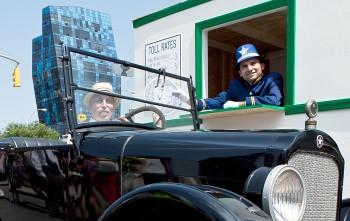

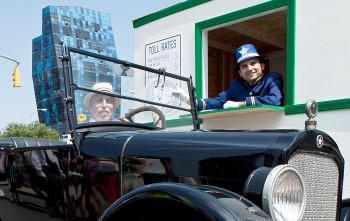

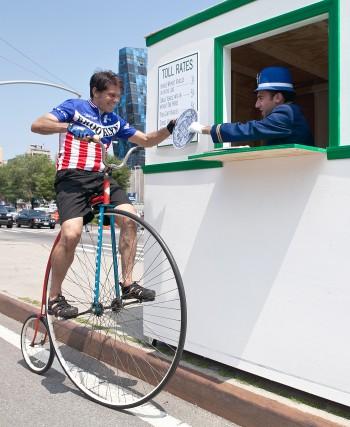
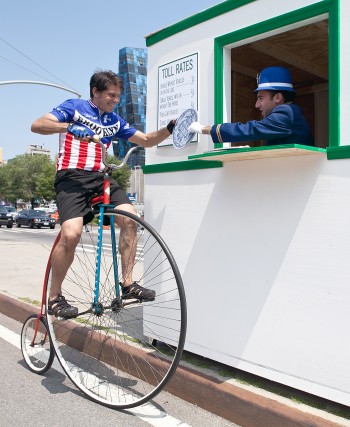

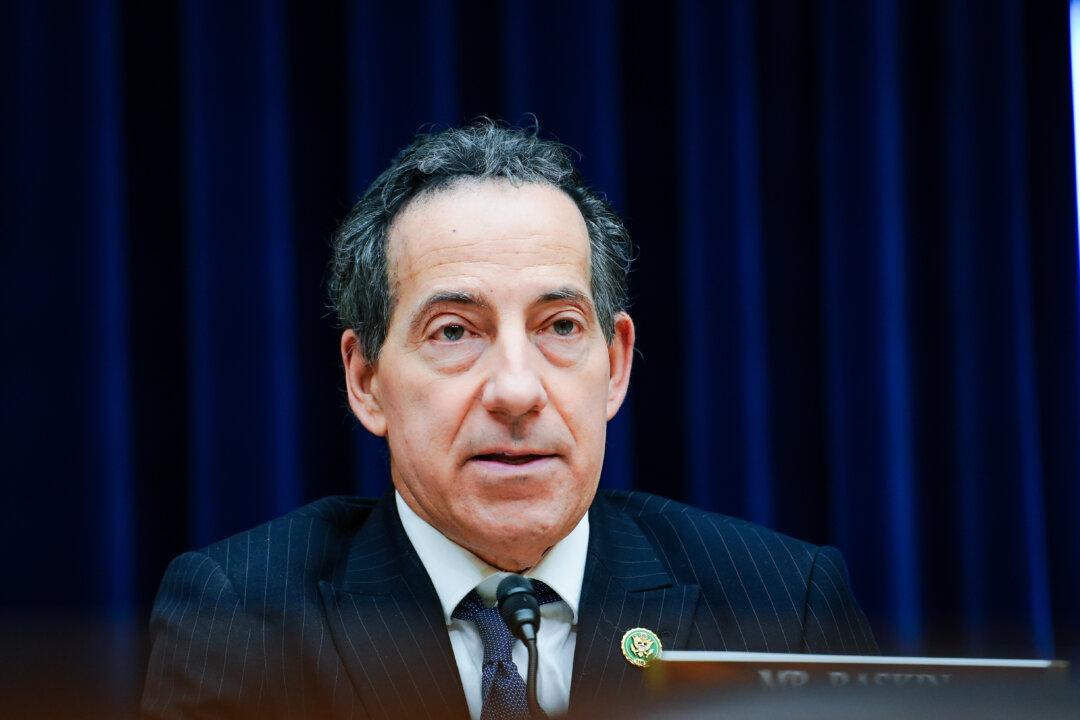
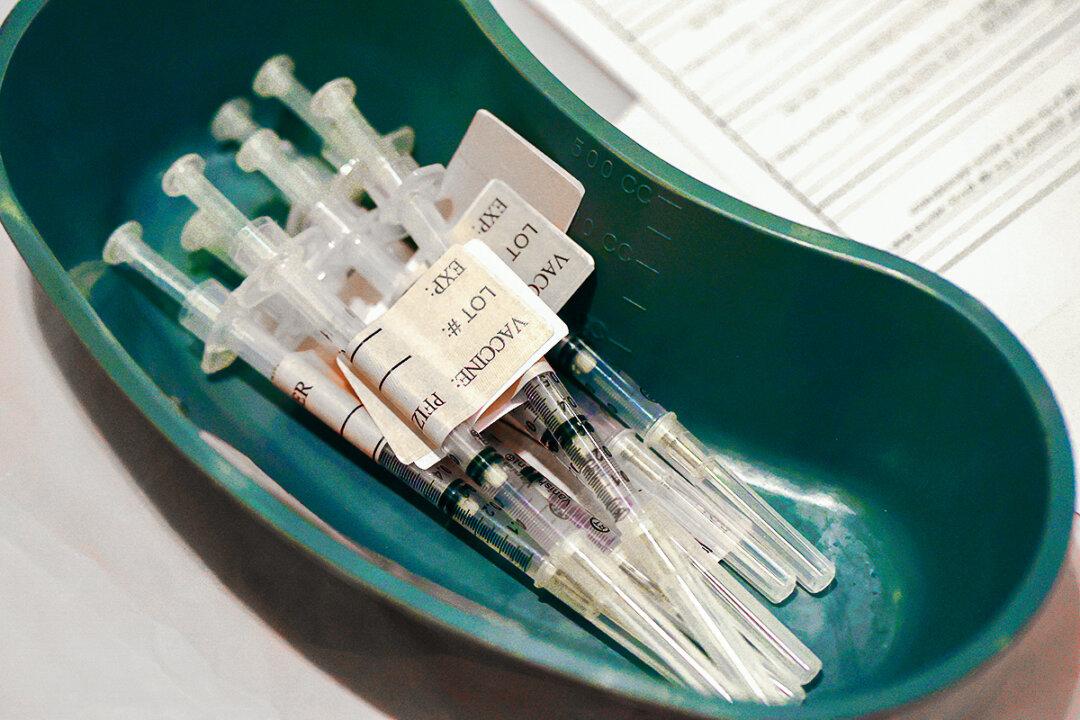
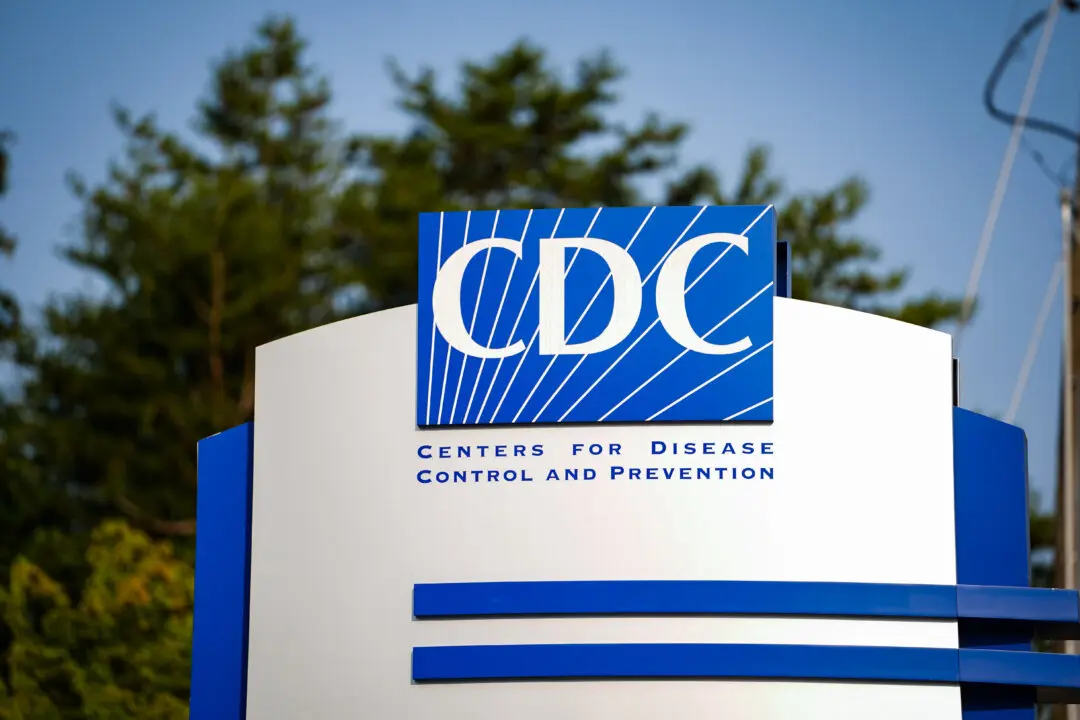
Friends Read Free